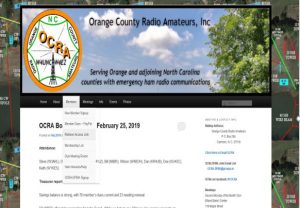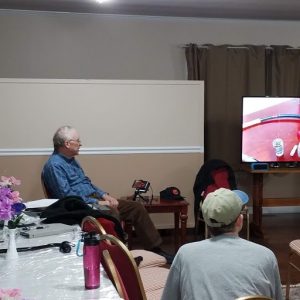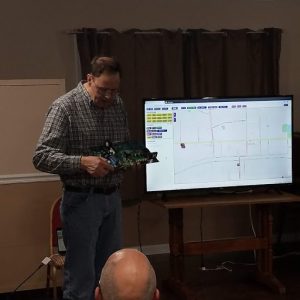Introductions:
Sixteen members were present, with three people taking exams.
Treasurer Report:
Balance continues to be strong. Currrent membership is at 78, with 23 needing renewal, and one expiring this month.
Seventeen new members have joined since January.
Repeater:
Dan (KR4UB) brought the latest Southeastern Repeater Association (SERA) repeater journal, providing a listing of repeater frequencies and other relevant information. The SERA was founded in 1971 as the North Carolina FM Repeater Association Inc., when a group of state repeater owners got together to form an organization designed to assist in coordinating, providing communication & technical information, and bringing together all amateur repeater owners into one united body.
RepeaterBook applications are available for Android and Apple devices. The applications are helpful to identify local repeaters during travels.
Have another Meal (HAM)
Wilson (W4BOH) has offered to host a family friendly, fall cookout of burgers and dogs in October. You should have received an email via the group.io list serve. If you did not receive an email, but are interested in attending, please let Wilson known. Please bring vegetables and desserts to share.
Green Bank Telescope
Dan (KR4UB) is planning to revisit the Robert C Byrd Green Bank Telescope (GBT) in Green Bank, West Virginia. The Green Bank site was part of the National Radio Astronomy Observatory (NRAO) until September 30, 2016. Since October 1, 2016, the telescope has been operated by the newly separated Green Bank Observatory. The telescope honors the name of the late Senator Robert C. Byrd who represented West Virginia and who pushed the funding of the telescope through Congress.
The Green Bank Telescope operates at meter to millimeter wavelengths. Its 100-meter diameter collecting area, unblocked aperture, and good surface accuracy provide superb sensitivity across the telescope’s full 0.1–116 GHz operating range. The GBT is fully steerable, and 85% of the entire local celestial hemisphere is accessible. It is used for astronomy about 6500 hours every year, with 2000–3000 hours per year going to high-frequency science.
Amateur Radio Emergency Service (ARES):
ARES:
Steve (W3HAL) stated OC Emergency Services has requested that OC ARES/AUXCOMM volunteers be on standby for probable activation to support evacuation shelters due to forecasted flooding, high winds and power outages. Details are pending updates on Hurricane Florence’s path and timing and probably won’t be available until late Wednesday or Thursday morning.
The typical scenario would have one or two shelters plus the EOC opening, with a team of two ham radio operators per site for two 12 hour shifts per day. That would require 12 volunteers each day.
As always, the first priority is to make sure your family is safe and prepared for the storm, as mentioned on Saturday’s ARES Training net. Meanwhile, evaluate your availability to deploy on Thursday, 09/13 through Saturday, 09/15. If you think you might be available, depending, on how the storm actually affects our area of course, please email me directly so I can get a rough idea of how many volunteers might be available.
Volunteers would need to be registered in the AUXCOMM database to deploy to the EOC. For shelters, at least one on the team would need AUXCOMM registration and the second could be an ARES volunteer.
And one final reminder to log into the AUXCOMM database and verify your contact info is still valid, if you haven’t done so recently. https://www.auxcomm.us/db/nc/ (Ignore the certificate error notice)
Please contact Steve w3ahl@att.net for further information
Hog Day:
Hillsborough Hog Day may be postponed or cancelled due to Florence. Please check the website for up-to-date information.
Boy Scouts Jamboree:
Jamboree-on-the-Air, or JOTA, is the largest Scouting event in the world. It is held annually the third full weekend in October. JOTA uses amateur radio to link Scouts and hams around the world, around the nation, and in your own community. This jamboree requires no travel, other than to a nearby amateur radio operators ham shack. Many times you can find the hams will come to you by setting up a station at your Scout camporee, at the park down the block, or perhaps at a ham shack already set up at your council’s camp.
Martin (KA5JUJ) shared how one creates a cantenna, a tin can waveguide for WiFi.
Baofeng handheld radios are popular in the amateur radio community as inexpensive, entry level HTs. Future OCRA membership programs including learning more about repeater operations, programming a Baofeng, and overcoming “mic fright.”
























